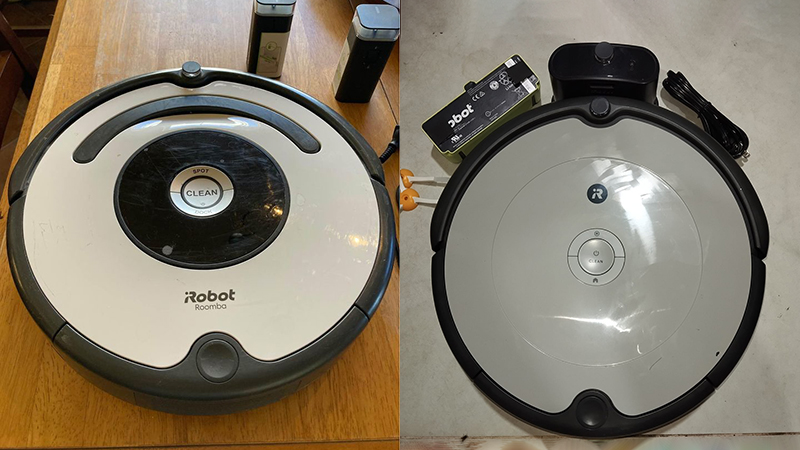Today, I bring you a comprehensive comparison between two highly regarded contenders: Roomba 670 vs 692. Both vacuums are from the reputable Roomba brand and claim to make your cleaning chores effortless. However, after a detailed analysis of their features, performance, and overall value, I have concluded that the Roomba 692 is the winner in this comparison between two Roomba robotic vacuums.
The Roomba 692 is an excellent robotic vacuum for homeowners who want top-notch cleaning technology at an affordable price. It has a long battery life that allows it to clean multiple rooms on a single charge, providing thorough cleaning coverage for your entire home.
The Roomba 670 is an incredibly user-friendly and straightforward design that can be used by people of all ages and sizes, regardless of their technical experience. It is also ideal for households with pets, as it can effectively handle pet hair.
Roomba 670 vs 692: Comparison Chart




Roomba 670 vs 692: Differences
After considering the differences between these robotic vacuums, I concluded that the Roomba 692 won 1:0 and tied 3 against the Roomba 670. To be honest, both share many similar features and functions; however, in my cleaning tests, the Roomba 692 has slightly better performance.
Cleaning Performance
The winner: Roomba 692
Compatible floor types
Both the Roomba 670 and the Roomba 692 have impressive cleaning capabilities, making them reliable cleaning companions for your home.
These robotic vacuums are highly efficient at cleaning hard floors. They can handle various types of debris, from fine dust particles to larger ones such as grass, crumbs, and cereals. You’ll be pleasantly surprised by how effectively they clear your floors of dirt and dust, making your surfaces significantly cleaner.
As for heavy and fine debris, such as kitty litter, these robots may struggle a bit. Although they can eventually pick up these types of debris, it might require a bit more time and a few additional passes.
These vacuums are equipped with high-performance brushrolls, which contribute to their efficiency and ensure a thorough cleaning process. They include two brushrolls, a flexible brush, and a main brush, along with a side brush, which combine to provide a comprehensive cleaning experience. The side brush, in particular, performs admirably along floor edges, ensuring that no dust or debris is left behind.
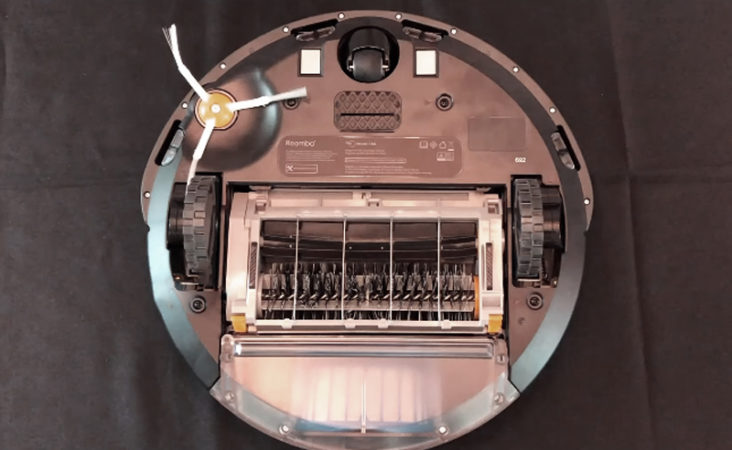
Transitioning between different floor types, such as carpet to tile or throw rugs, can be a challenge for some robotic vacuums. However, these vacuums handle the task effortlessly. Their stiff bristle brush rolls prove to be highly effective, delving deep beneath the surface of medium-pile carpets to extract embedded dirt and debris. The result is a carpet that looks and feels refreshingly clean.
However, my tests show that the Roomba 670 takes more time to clean the same area with the same amount of dirt than the Roomba 692. Moreover, the Roomba 67 also struggles more on thick carpets than the Roomba 692.
Pet hair performance
When it comes to pets’ hair-cleaning performance, both the Roomba 670 and 692 perform admirably, making them great for homes with furry pets. These robotic vacuums excel at collecting clumps of pet hair and efficiently lifting them from various surfaces.
If you have a household with pets that shed or even human-length hair, these robots can significantly contribute to keeping your floors clean. However, in my opinion, these devices may not entirely replace a traditional vacuum cleaner, especially in homes with heavy-shedding pets and long human hair.
Like many other robotic vacuums, the Roomba models are also prone to hair wrapping around their brush rolls over time. This minor maintenance task is a small compromise for the convenience and efficiency these robotic vacuums provide in managing pet hair.
Design & Usability
Tie
Build quality
When evaluating the build quality of the Roomba 670 and the Roomba 692, it is evident that both robotic vacuums are constructed in a sturdy and reliable manner, which aligns well with the reputation of the Roomba brand. These models are designed to withstand the demands of daily cleaning tasks in your home, and are built to last.
Both the Roomba 670 and the Roomba 692 are designed to be robust and long-lasting. They feature a similar construction, with a durable plastic exterior that gives them a sleek and modern look. This hard plastic shell not only contributes to their overall durability but also ensures a lightweight and easy-to-maneuver design. When held, these robots feel sturdy and don’t flex.
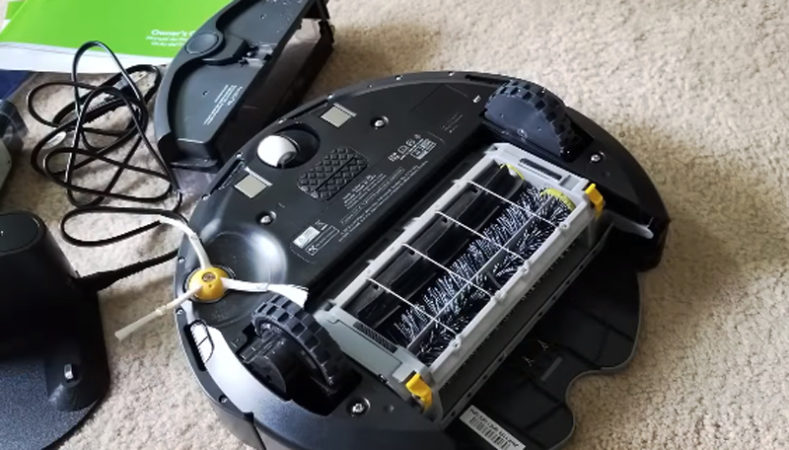
What’s more, Roomba’s brush roll design is quite impressive. Both models have brush rolls that are specifically designed to prevent the accumulation of hair and debris over time. This not only improves their cleaning efficiency but also prolongs the life of the vacuum.
Dimensions and weight
Both are designed with a compact and space-efficient profile, making them well-suited for navigating through various rooms and tight spaces within your home.
In terms of their dimensions, both the Roomba 670 and 692 measure 13.4 inches in width. However, there’s a slight difference in their heights, with the Roomba 670 standing at 3.6 inches tall, while the Roomba 692 is slightly shorter at 3.5 inches. This is a minimal difference and will not impact their ability to navigate under furniture or in tight spaces.
As for their weight, the Roomba 670 weighs in at 6.6 lbs, while the Roomba 692 is slightly heavier at 6.8 lbs. Both models remain relatively lightweight, making them easy to transport and carry if necessary.
Comparing these dimensions and weight with models from other brands on the market, their compact and lightweight nature is a practical advantage, allowing them to navigate efficiently and cover various areas in your home without getting stuck or causing disruptions.
Battery and charging
In terms of battery performance, both of these robotic vacuum models rely on Li-ion batteries, which are popular for their efficiency and reliability.
The Roomba 692 has an impressive runtime of up to 90 minutes on a single charge. With an ample battery life, this cleaning device can cover large areas and is ideal for homes with larger floor plans.
In my test, this one can clean an entire space of 1880 square feet on a single charge. Of course, in real life, the machine’s runtime is still based on the amount of dirt, the cleaning mode selected, and the complexity of the cleaning environment.
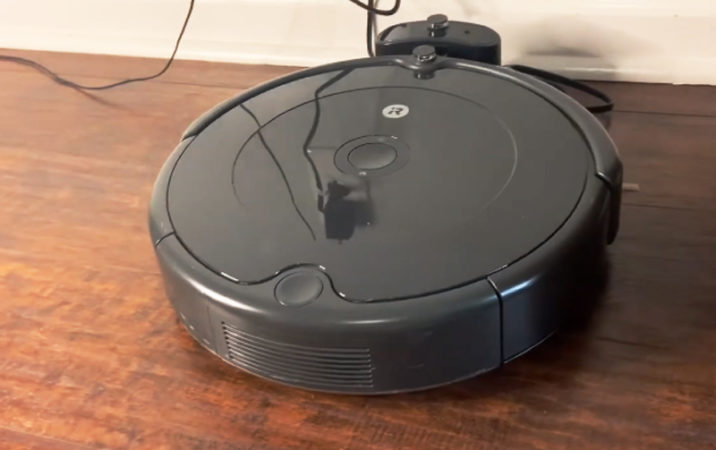
The Roomba 670 has a similar battery life to the Roomba 692, but, in practical tests, its performance per charge is not as strong. This discrepancy in real-world performance may be attributed to various factors, including differences in cleaning algorithms and navigation systems.
One notable positive aspect shared by both of them is that they can charge quickly. It takes only about an hour for them to fully recharge, which is very convenient. When the battery life is low, the machine will automatically come back to the docking station and charge.
However, there are some issues here. My tests show that the Roomba 670 sometimes cannot find the way to the charging base and ends up running out of battery halfway. Meanwhile, the Roomba 692 does this task quite smoothly.
Noise level
These robotic vacuum models are generally quieter than traditional vacuum cleaners. Their noise level is around 60 decibels.
These devices are relatively quiet, particularly when compared to the noise generated by conventional vacuum cleaners. Although audible, the sound it produces is similar to general white noise, which allows it to blend into the background. This makes it a suitable option for cleaning during the day or while performing other activities, such as working or watching TV, without being too disruptive.
However, individual sensitivity to sound may vary, and some people may still find it noticeable. You can avoid running them during the night, as they may be bothersome when trying to sleep.
Navigation and obstacle avoidance
These devices rely on a range of sensors, reacting to obstacles and environmental cues as they encounter them. They move in random patterns and cannot detect obstacles. If the robots bump slightly into an object, they will turn and change their path. They can’t create and save maps of your house. Therefore, they lack advanced features such as cleaning specific rooms or areas.
Both of them are designed to navigate around room edges and corners, ensuring that they can clean even hard-to-reach areas. They can also seamlessly move from carpeted areas to hardwood floors and rugs without issues.
In addition, these robots are equipped with cliff sensors that prevent them from accidentally falling down stairs or other elevated surfaces. This feature can give you peace of mind as it ensures that the robots can navigate your home safely and without any risks.
Control
Tie
The Roomba 670 and Roomba 692 offer two primary methods of control: manual control using physical buttons on the robot itself and the convenience of the iRobot App for remote management and customization.
For manual control, these robots come with physical buttons located on their topside. These buttons are easy to use and provide a simple and tactile way to commence cleaning cycles and send the robots back to their charging docks. You can start or stop cleaning operations directly on the device using these intuitive and user-friendly buttons.
Besides, the Roomba 670 and 692 offer a more advanced and feature-rich method of control through the iRobot App. The application enables you to use your smartphone’s power to manage your robot vacuum from a distance.
Within the app, you can take advantage of advanced features like naming the robots and scheduling the cleaning time.
Cleaning & Maintenance
Tie
In my opinion, maintaining these robotic vacuums is simple and quick.
When it comes to the dustbin, both of these machines have the same bin capacity of about 500 ml. This number may not be too big, but it is also not too small when compared to other models that I am familiar with. The dustbins are designed to be easy to remove and empty.
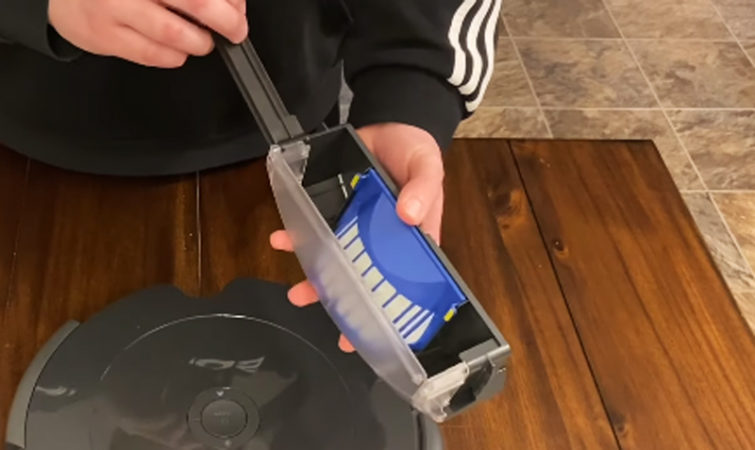
Their filters are the usual type and should not be washed with water. Instead, clean it with a cloth or specialized brush.
In addition, you need to clean the two brush rolls and the edge brush regularly to maintain your robot’s cleaning performance. Also, make sure to clean the connection points between the robot and the charging base. If these points are dirty, your robot won’t be able to find its way back to the base for charging or docking.
Quick Rundown Of Roomba 692
- CLEAN SMARTER - Sleek, premium design complements your home décor; The Roomba 692 is a great way to begin cleaning your home smarter. Just schedule it to clean up daily dirt, dust, and debris with the iRobot HOME app or your voice assistant..Runtime : 90 minutes
- LOOSENS, LIFTS, AND SUCTIONS - The 3 Stage Cleaning system and Dual Multi-Surface brushes grab dirt from carpets and hard floors, an Edge-Sweeping brush takes care of corners and edges.
- LEARNS YOUR LIFE LISTENS TO YOUR VOICE - Learns your cleaning habits to offer up personalized schedules, while Google Assistant and Alexa allow you to start cleaning with just the sound of your voice.
- ADAPTIVE NAVIGATION - A full suite of advanced sensors allow Roomba to navigate under and around furniture, and along edges. Cliff Detect keeps it from falling down stairs.
- SENSES AND ELIMINATES DIRT - Dirt Detect Sensors alert your robot about dirtier areas of your home, like high-traffic spots, and cleans them more thoroughly.
Quick Rundown Of Roomba 670
- 3-Stage Cleaning system loosens, lifts, and suctions dirt, dust, and hair from hard floors and carpet.
- Dual Multi-Surface Brushes work together to grab dust, dirt, and large debris. The Auto-Adjust cleaning head automatically adapts its height to effectively clean both carpets and hard floors.
- Full suite of sensors intelligently navigate the robot under and around objects and under furniture to help thoroughly clean your floors.
- Connect and schedule from anywhere. Use Alexa or Google Assistant voice commands to control cleaning. Use the iRobot HOME App to schedule & monitor cleaning sessions.
- Runs for up to 90 minutes before automatically docking and recharging
Product Videos
Related Articles to Roomba 692
- Roomba 692 vs i3: A Head-To-Head Comparison
- Roomba 692 vs 694: 2 Of The Best iRobot’s Budget-friendly Robot Vacuums
References:
- Roomba 692: https://www.irobot.com/en_US/roomba-vacuuming-robot-vacuum-irobot-roomba-69-2020/R692020.html
- Roomba 670: https://www.shopirobot.com.au/roomba-robot-vacuum-cleaner/roomba-670-robot-vacuum.html

Richard B. Schmidt is a prominent figure in the vacuum cleaner industry, boasting over 15 years of expertise. Armed with a Robotics Engineering degree from Northeastern University and a Master’s in Consumer Science from Harvard, his unique blend of technical knowledge and consumer insights positions him as a sought-after authority in vacuum cleaner evaluation. Richard’s career began at Dyson, where he contributed to the development of innovative vacuum models. Transitioning to advocacy and reviews, he co-founded the first Vacuum-focused blog in 2008, offering comprehensive analysis and user guides for various vacuum cleaners. In 2020, he founded RoboMop.net, providing ongoing insights through columns and buyer’s guides.
